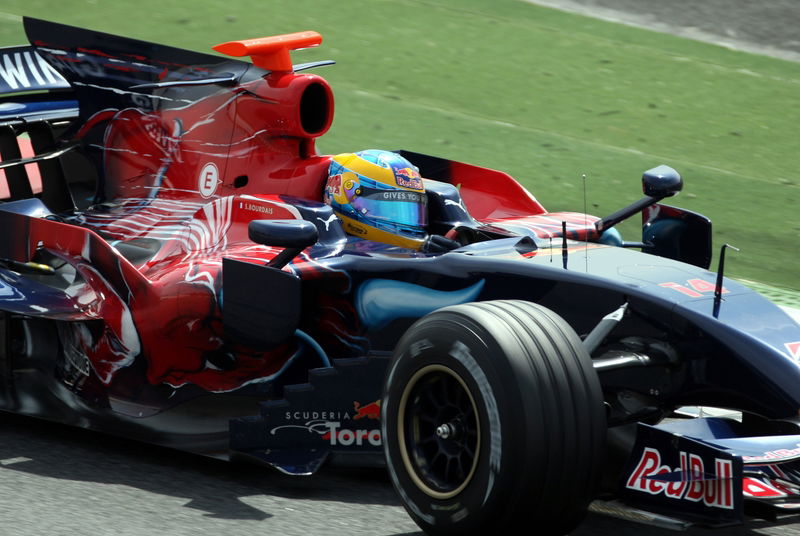Electronic flags to debut in Singapore.
As well being Formula One's first ever night race, the Singapore Grand Prix will also mark the introduction of electronic flag displays as well as the traditional flags to let the drivers know of problems ahead.
As well being Formula One's first ever night race, the Singapore Grand Prix will also mark the introduction of electronic flag displays as well as the traditional flags to let the drivers know of problems ahead.
The flag signals, which have been an integral part of grand prix motor racing for over five decades, have been expected to be supplemented by lights on the dashboards of the competing cars but, in Singapore, will be supplemented by electronic trackside boards using technology similar to that used to guide pilots at major airports. Given the dark background expected at the race - despite the extensive floodlighting - the so-called 'digiflags' will display the different flag colours more effectively than the flags themselves.
The system has been developed by the grand prix's technical consultants, Valerio Maioli SpA, and is the result of more than a decade of development at the Barcelona, Imola and Monza circuits in order to meet the stringent requirements of the FIA.
Some 35 display panels will be situated around the Singapore street track, and will be controlled by hand by officials at each marshals' post, supplementing the traditional flag signals. In addition, the race director will have an overview of the warnings being displayed around the entire circuit, allowing more centralised, efficient communication of warnings to drivers.
The announcement of the new 'digiflag' technology follows a successful week-long demonstration of the lighting units that will help to make history when Singapore hosts the 15th round of the season on the weekend of 28 September.
Sixteen lighting projectors were installed and tested on a 64-metre stretch of St Andrew's Road last week, a section that will see cars reaching anything up to 260km/h on race weekend. The system was operated for five hours each night through the week, giving valuable feedback on the operation of the lights in all weather conditions, and over a sustained period, as well as allowing members of the public to view the infrastructure - and get an idea of how it might impact on 'everyday' life in Singapore.
In September, the entire track will be fitted with nearly 1500 lighting projectors which will be powered by twelve twin-power generators and produce an overall average of 3000 lux. As a result, the track will be almost four times brighter than a typical sports stadium, but with plans in place to ensure that there is no risk of glare distracting or confusing the drivers. At the recent MotoGP night race in Qatar, all trackside vehincle had to have their brake lights taped up because it was claimed that the red glow could be seen by the riders on the track.
Installation of the full lighting system will be carried out in stages, starting with the pit straight at the end of May, with completion targeted for 31 August, a month ahead of the race.
The live demonstration of the lighting system is the circuit's latest milestone, with the pit building now 65 per cent complete and well on schedule to be ready by the end of June. The modification works to existing roads, such as the removal of kerbs and traffic islands, as well as the expansion of the Promenade in front the National Day Parade seating gallery, are also in the advanced stages of completion.
The remaining of the road works, such as the construction of a new track section in front of the pit building and the construction of a service road and tunnel to the paddock, are expected to be completed by late May.
"As we gear up to the Singapore F1 race in September, we are pleased that the necessary infrastructural works are progressing well ahead of schedule," LTA chief executive Yam Ah Mee said, "As far as possible, we will strive to minimise the impact that the road works will have on motorists and members of the public, while ensuring the track will be completed in good time for handing over to the F1 race organisers, and meeting the stringent standards required for the F1 race."
